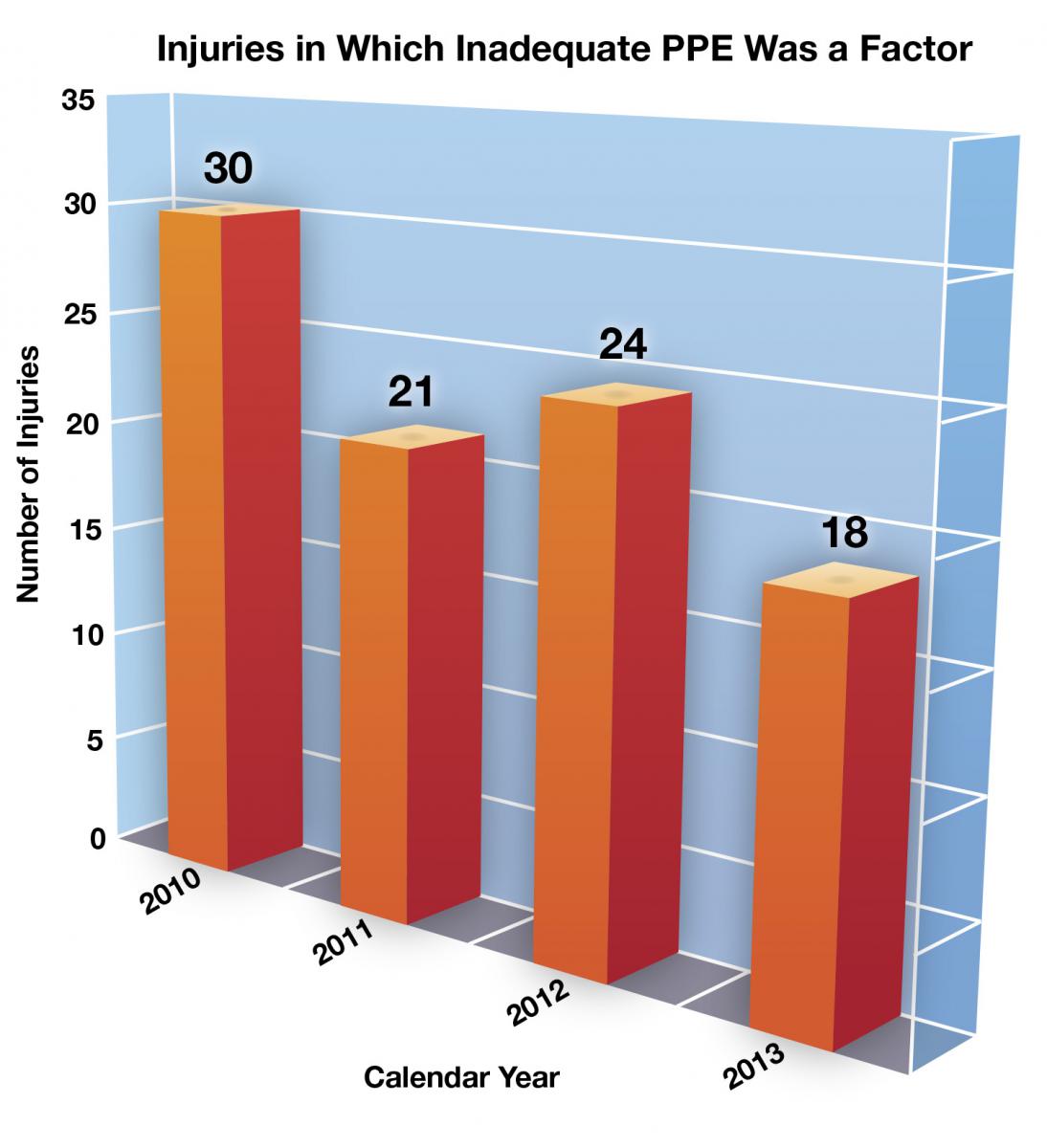By Terri Bray, Dave Heimbrook, Craig Reynolds, and Robert Wiltrout, Guest Writers
Whether in a research laboratory or an operations environment, past performance is frequently reviewed to plan for future improvements. Such was the case last year when management recognized the need to change the policy on the minimum set of personal protective equipment (PPE) to be worn in the laboratories to reduce both the number and consequence of injuries at the Frederick National Laboratory for Cancer Research (FNLCR).
Not only was the policy changed to require a minimum set of PPE for work in a laboratory, animal facility, or good manufacturing practices (GMP) production area, but also a goal was set to reduce by 50 percent the number of injuries that could have been prevented or mitigated by wearing the appropriate PPE.
The new policy, which was implemented in January 2013, states that, regardless of your employer, if you work in a laboratory, animal facility, or GMP production area, you are required to wear, at minimum, a fully fastened lab coat, safety glasses, appropriate gloves, and closed-toe shoes. These requirements also apply if you are observing an experiment or are in the vicinity of another employee conducting work.
The only exception is for work that is purely administrative, such as using a computer, conversing with a colleague, or writing in a journal.
 Forty Percent Reduction Since 2010
Forty Percent Reduction Since 2010
After one year, improvements have been noticeable. As shown in the chart below, the number of injury cases that could have been prevented or mitigated by wearing the appropriate PPE has been reduced by 25 percent in the last year alone, and by 40 percent since 2010.
“The trend is going in the right direction,” said Dave Heimbrook, Ph.D., president of Leidos Biomedical Research, which operates FNLCR for the National Cancer Institute. “We are confident that we can reduce this number even further by continuing to vigilantly communicate and reinforce our PPE policy.”
Environment, Health, and Safety (EHS) staff can help you select the right PPE and obtain samples of the latest PPE solutions to ensure that you find the right fit. Call EHS at 301-846-1451 for assistance.
What Do You Think About the Safety Policy?
EHS continues to seek to improve the safety program and would like to hear from the people who are directly affected by the safety policy.
- How has this policy worked for you?
- What about it, if anything, should be changed?
- What could EHS do to make compliance easier and communication clearer?
Please share your thoughts and ideas by contacting Terry Bray, EHS director (terri.bray@nih.gov).
Additional Information may be found here: http://ncifrederick.cancer.gov/content/new-ppe-policy-will-help-prevent-injuries
Terri Bray is director of the Environment, Health, and Safety Directorate; Dave Heimbook, Ph.D., is president of Leidos Biomedical Research; Craig Reynolds, Ph.D., is director of the Office of Scientific Operations, NCI at Frederick, and associate director of NCI at Frederick; and Robert Wiltrout, Ph.D., is director of the NCI Center for Cancer Research.


